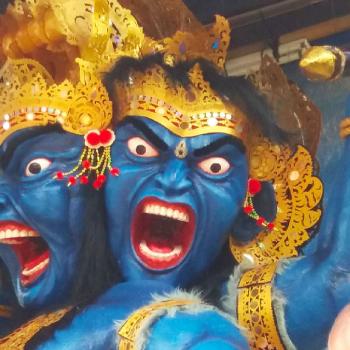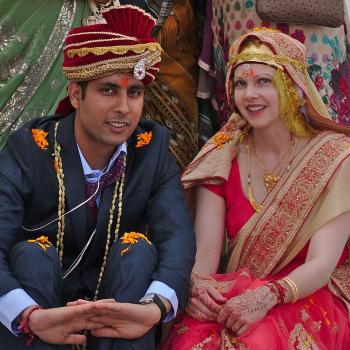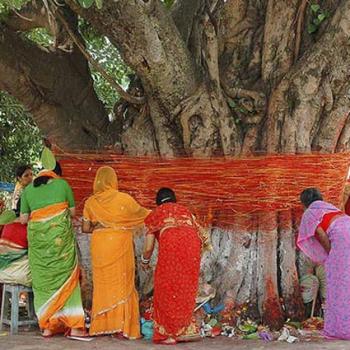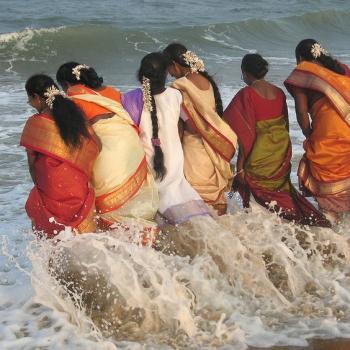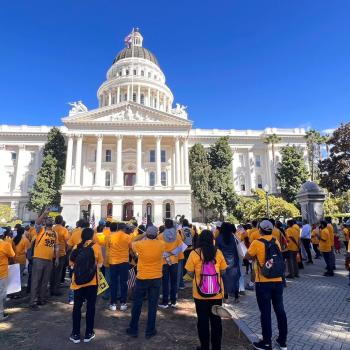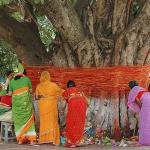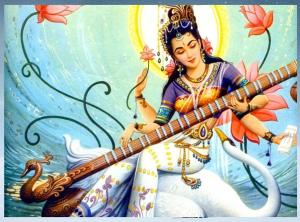
For Hindus across the world, it’s the time to mark the festival of Basant Panchami, dedicated to the worship of Devi Saraswati, the Goddess of Learning and Music and celebrating the advent of spring. In a way it is the perfect combination because Saraswati symbolizes creativity and was herself born on this day, just like the nature itself emerges from winter and renews the world with new creativity each spring. This is also the time, swaths of the Indian countryside is aflame with fields of mustard, their trademark flowers associating Basant Panchami with the golden mustard color in more ways than one.

The festival derives its name itself from the season of spring-variously known as ‘Basant’ or ‘Vasant’ and the word ”Panchami” meaning fifth – in this case the fifth day of the month of Magha, in the Shukla Paksha, as tracked by the Hindu Lunar calendar. Not many realize it, but the day also begins the countdown to Holi, which always follows 40 days later,with its explosion of colors-showing the deep linkages of Hindu festivals to one another as well as to holistic cycles of nature itself.
Global yet Local
A world without Devi Saraswati would be one shrouded in ignorance, no wonder than that through history, Basant Panchami was an eagerly awaited milestone. And it was not just the sweep of the Indian subcontinent,
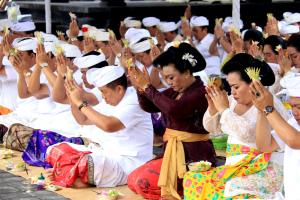
celebrations extended all the way to Bali and Indonesia, where Hindus still celebrate the day as “Hari Raya Saraswati”. Quite befittingly, the celebrations take center stage in schools, where students arrive dressed in their best to pray, sing and dance – honoring the very arts the Devi herself exemplifies. Children also partake in ceremonies that would feel familiar to Hindus across the globe — placing their books before the Goddess for her blessings.
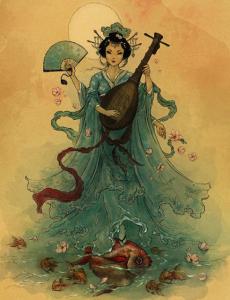
Interestingly the worship of Devi Saraswati is very popular even in Japan, where she may be “the most revered deity after the Buddha,” and is also widely revered in her avatar as Benzaiten, the Buddhist Goddess of learning with many popular shrines dedicated to her.
And across the length and breadth of Bharat, local celebrations of Basant Panchami take on varying regional flavors and meaning, all the while displaying central core themes that tie them all together.
In the southern parts of India, the festival better known as Sri Panchami, is celebrated with great fervor – Sri being another manifestation of the omnipresent Goddess. It marks a time to give thanks for a bountiful harvest with traditional sweets like payasam. In the north, special fairs and celebrations mark newly sown crops, and the festivities include kite flying, public feasts, and spring carnivals.
Shrinking Spaces for Holistic Celebrations
Until recently, the country of Pakistan – especially the areas around Lahore, also celebrated Basant with great enthusiasm. Their skies would be filled with colorful dueling kites, and the atmosphere rang with festive music, fun and food. Deepa Mehta’s period movie “Earth-1947” featured a song that showcases the sheer joy and vibrancy of what Basant in Pakistan used to be.
Sadly since 2007, this ancient and joyous celebration of spring and hope has been banned in Pakistan, falling prey to growing hate against its Hindu/Sikh history and the desire of the Pakistani state to wipe out all traces of its indigenous past and Hindu roots.
We see the same worrying trend and shrinking spaces for Saraswati Puja in the eastern side of the Indian subcontinent where it was among the most important festivals of the year for the Bengali speaking community, celebrated with zest across West Bengal and neighboring Bangladesh.
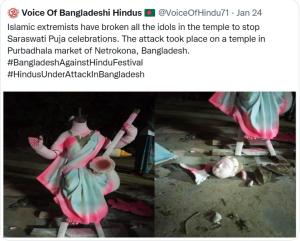
On both sides of the border, pandals would be set up with life size moortis of Devi Saraswati, and people thronged the streets to celebrate. However, with growing intolerance for Hinduism in Bangladesh, the festival is now becoming a time for trepidation as much as celebration, since those same mesmerizing moortis of the Devi are attracting physical violence and attacks against the beleaguered Hindu minority for several years now.
Alarmingly enough this year we see some headlines on the Indian side, mirroring the trends that led to the ban of Basant in Pakistan.
Is Spring Ahead?
What one wonders will the future bring? When sacred spaces and sacred moments become points of tension the trauma is doubled and cuts deep. Yet Basant is the time for renewal and new beginnings and so hope must also spring deep. The Devi in all her myriad forms has manifested and inspired for generations. And she will surely do so again!






